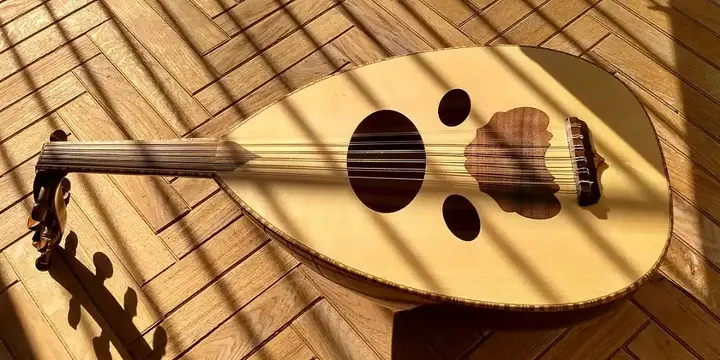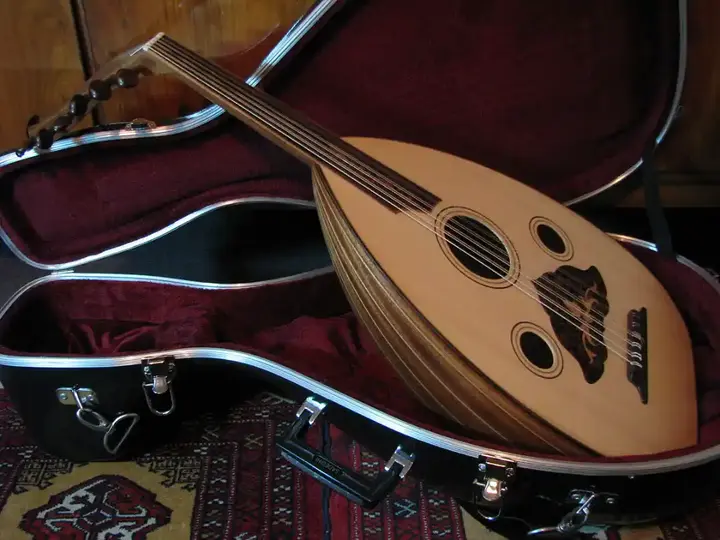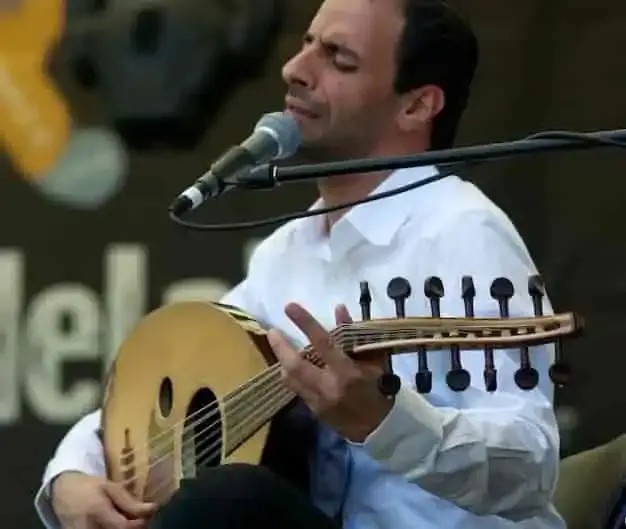The Oud: The Soulful Voice of the Arab World
Oud is believed to have originated more than 5,000 years ago in the ancient civilizations of the Middle East. It is said to have evolved from the Persian "barbat", a similar instrument that was prevalent in the pre-Islamic era. The popularity of oud spread throughout the Arab world during the Islamic Golden Age, where it was revered for its unique sound and versatility. The oud was not only a musical instrument, but also a symbol of status and culture. He often played at the royal court and was considered a sign of sophistication. The journey of the oud through time is a testament to its enduring appeal and ability to adapt to changing musical trends.
Show key points
- The oud originated over 5,000 years ago in the ancient Middle East and evolved from the Persian "barbat."
- Revered during the Islamic Golden Age, the oud was both a popular instrument and a symbol of status, often featured in royal courts.
- Constructed with precision from various woods like spruce or cedar, each oud is handcrafted to produce its distinctive sound.
- ADVERTISEMENT
- In Arabic music, the oud plays a vital role due to its expressive tone and adaptability across traditional and modern genres.
- The oud’s legacy extends beyond the Arab world, influencing instruments like the guitar and becoming integrated into global music styles.
- Renowned oud players such as Farid Al-Atrash, Mounir Bashir, and Marcel Khalife have significantly shaped its development and global recognition.
- Today, the oud remains a cultural symbol and continues to thrive in education, therapy, and international music scenes.
Origins and history

Oud is believed to have originated more than 5,000 years ago in the ancient civilizations of the Middle East. It is said to have evolved from the Persian "barbat", a similar instrument that was prevalent in the pre-Islamic era. The popularity of oud spread throughout the Arab world during the Islamic Golden Age, where it was revered for its unique sound and versatility. The oud was not only a musical instrument, but also a symbol of status and culture. He often played at the royal court and was considered a sign of sophistication. The journey of the oud through time is a testament to its enduring appeal and ability to adapt to changing musical trends.
Recommend
Design & Construction

The oud is a stringed pear-shaped instrument. They usually have 11 or 13 strings, divided into 5 or 6 cycles. The body is made up of slats of wood known as ribs, and the sound board is usually made of spruce or cedar wood. The intricate craftsmanship involved in oud making is a testament to the importance and respect it enjoys in Arab culture. Each stick is handcrafted, and the process can take several weeks to complete. The choice of wood, body shaping and string placement all contribute to the unique sound of each oud. The design of the oud has evolved over the centuries, with modern oud often featuring more strings and a larger body for a richer sound.
The role of the oud in Arabic music

The oud plays a central role in Arabic music. It is used in various musical genres, from traditional folk music to modern pop music. The versatility of the oud allows it to produce a wide range of tones and melodies, making it suitable for both a solo performance and as part of a band. His deep and sonorous voice is often used to convey a range of emotions, from joy to sadness, reflecting the depth and complexity of Arab culture and history. The oud is often played solo, or as part of a band, in both classical and modern Arabic music. It is also used to accompany vocal music as it adds depth and richness to the overall sound. The versatility of the oud makes it suitable for a variety of musical styles, ranging from the complex rhythms of traditional Arabic music to the more contemporary sounds of modern Arabic pop music. The oud is also often used in taksim, a form of melodic improvisation in Arabic music, showing the player's skill and creativity. The role of the oud in Arabic music is not limited to performance; it is also used in music education, as many Arab musicians learn to play the oud as their first instrument.
Impact and legacy

The influence of oud extends far beyond the Arab world. He played an important role in the development of many other stringed instruments, including the European oud and the modern guitar. Today, the oud continues to inspire musicians around the world, transcending cultural and geographical boundaries. It has found its way into different genres of music, from jazz to rock, and has been embraced by musicians from different cultures. The heritage of the oud is not limited to music; it has also influenced art and literature, as the oud is often depicted in paintings and mentioned in poems and stories.
Oud today

Today, the oud remains a central instrument in Arab music. She is also gaining popularity around the world, with many musicians incorporating her unique sound into a variety of musical genres. The oud is not only a musical instrument, but also a cultural symbol representing the rich and diverse musical heritage of the Arab world. It is taught in music schools around the world, and there are many online resources available for those wishing to learn to play the oud. The oud has also found its way into the world of music therapy, where it uses its soothing voice to promote relaxation and healing.
Prominent oud players

There have been many prominent oud players throughout history who have left their mark on Arabic music. Among them:
• Farid Al-Atrash
Farid al-Atrash, a Syrian-Egyptian composer, singer and oud player, is one of the most famous figures in Arab music. Born in 1910, he is a member of the Druze princely family of al-Atrash. Fred's musical career spanned four decades, during which he composed more than 500 songs and starred in 31 films. His romantic and passionate style of oud playing has left a lasting impact on Arabic music.
• Mounir Bashir
Mounir Bashir is considered one of the greatest oud players in the world. Born in 1930 in Mosul, Iraq, Bashir has developed a unique style of oud that combines traditional Arabic music with contemporary Western music. He is often credited with promoting taksim, a form of melodic improvisation in Arabic music. Bashir's music is distinguished by his exceptional artistic skills and deep emotional expression.
• Marcel Khalife
Marcel Khalife, a Lebanese composer, singer and oud player, was instrumental in spreading oud worldwide. Born in 1950, Khalifa studied oud at the National Conservatory of Music in Beirut, and soon became one of the most prominent figures in contemporary Arab music. He is known for his innovative style of oud playing, often incorporating elements from Western classical music, jazz and other genres. Khalifa used his music as a form of social and political commentary, calling for peace and unity in the Arab world.
Conclusion

The oud is more than just a musical instrument; it is a symbol of Arab heritage and identity. Her lively voice still resonates, bringing with it the rich history and culture of the Arab world. When we listen to the enchanting tunes of the oud, we are reminded of the timeless beauty of Arabic music and the enduring legacy of this magnificent instrument. The journey of oud from ancient civilizations in the Middle East to the world stage is a testament to its enduring appeal and ability to connect people across cultures and generations.








